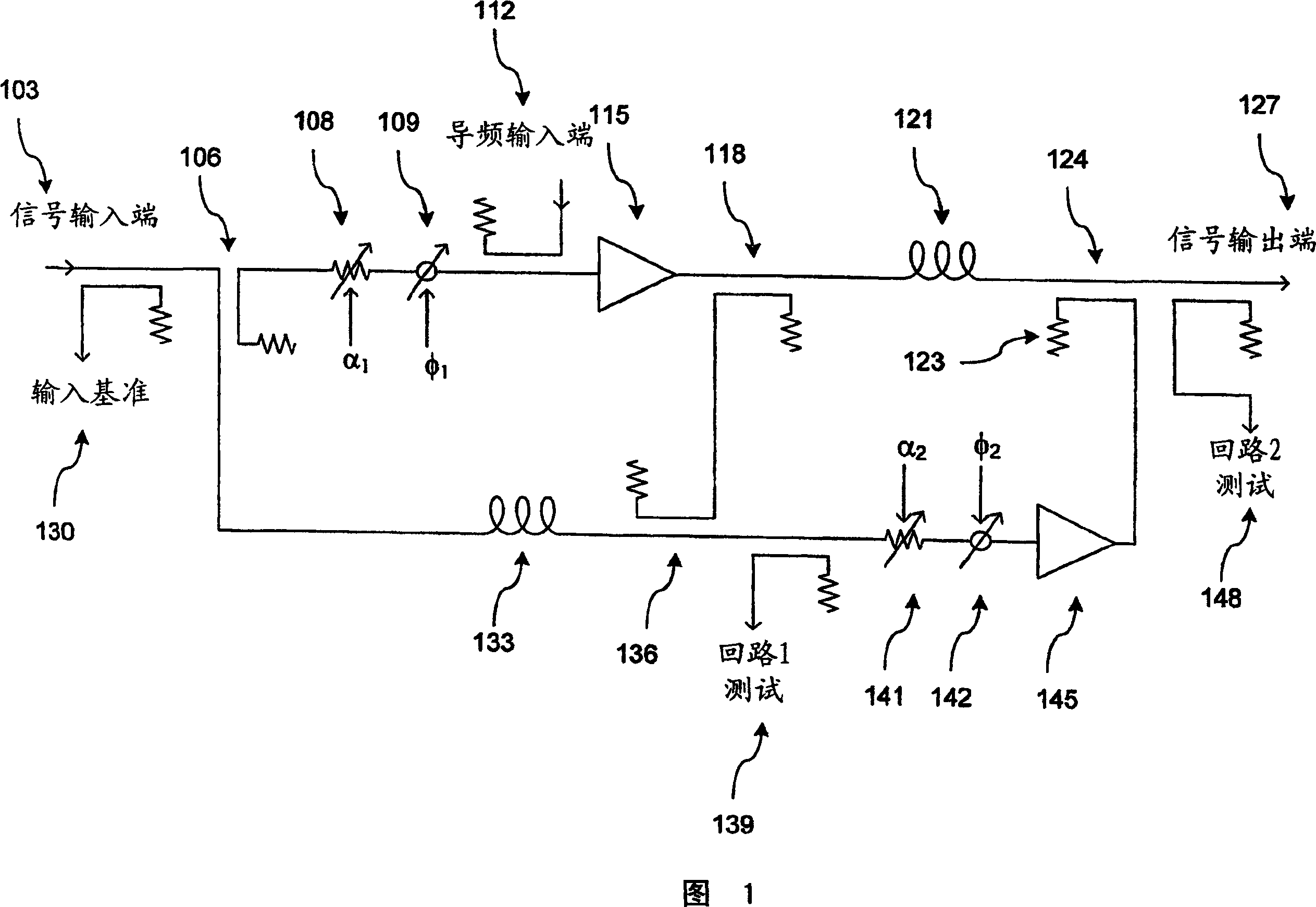System and method for control of loop alignment in adaptive feed forward amplifiers
A technology for controlling loops and amplifiers, applied in the directions of amplifiers, parts of amplifiers, electrical components, etc., which can solve the problems of limited processing power and failure to achieve fast and accurate loop convergence.
- Summary
- Abstract
- Description
- Claims
- Application Information
AI Technical Summary
Problems solved by technology
Method used
Image
Examples
no. 1 example
[0126] Figure 6 shows a first embodiment of the alignment and step update process. In the first embodiment, there are three methods of calculating alignment adjustment. To select the correct method, the process tests whether the descent direction is undetermined and whether the descent direction has been reversed from its most recent value. The two closest non-collinear descent directions are retrieved (603). If the nearest non-collinear drop θ nc (k) is undetermined, then the alignment adjustment is calculated (645) according to the following equation:
[0127] ( Δα k , Δφ k ) = ( α k - 2 , φ k ...
no. 2 example
[0154] Figure 7 shows a second embodiment of alignment and step size updating. The main difference is that it chooses the step size in terms of eliminating the remainder: i.e.,
[0155] the s k =f{P k} Equation 36
[0156] Where f{} is a specific function.
[0157] In a second embodiment, the nearest non-collinear descent direction value and measured value P k (703). Descent direction is tested (706). If the direction is not determined, then the alignment adjustment determined by Equation 26 is used (718). The alignment is updated (721) using Equation 25, and the discount factor is set to unity (β k = 1).
[0158] If the direction of descent is determined (706), then the step size is calculated using the mapping in Equation 36 (709). The alignment adjustment is based on Equation 23 (712). The alignment is updated (715) using Equation 25, and the discount factor is set to 0.7 (β k = 0.7). Although the mapping in Equation 36 can be obtained experimentally, it can be ...
PUM
 Login to View More
Login to View More Abstract
Description
Claims
Application Information
 Login to View More
Login to View More - R&D
- Intellectual Property
- Life Sciences
- Materials
- Tech Scout
- Unparalleled Data Quality
- Higher Quality Content
- 60% Fewer Hallucinations
Browse by: Latest US Patents, China's latest patents, Technical Efficacy Thesaurus, Application Domain, Technology Topic, Popular Technical Reports.
© 2025 PatSnap. All rights reserved.Legal|Privacy policy|Modern Slavery Act Transparency Statement|Sitemap|About US| Contact US: help@patsnap.com



